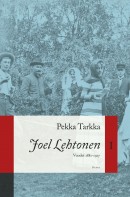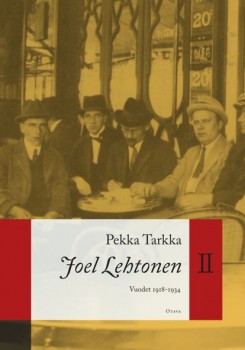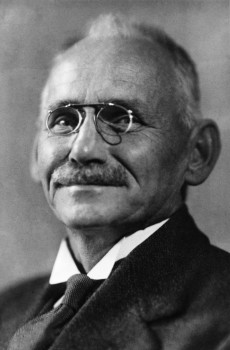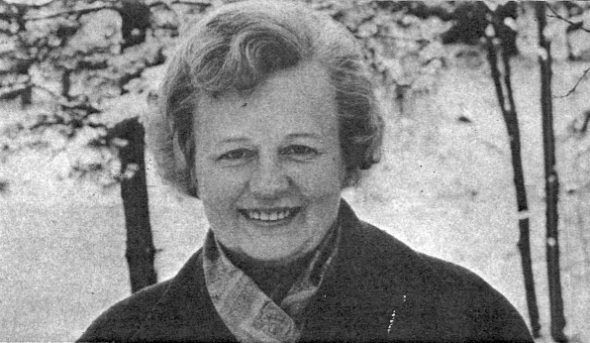Search results for "joel lehtonen"
Pekka Tarkka: Joel Lehtonen 1. Vuodet 1881–1917 [Joel Lehtonen 1. The years 1881–1917]
13 August 2009 | Mini reviews, Reviews
 Joel Lehtonen 1. Vuodet 1881–1917
Joel Lehtonen 1. Vuodet 1881–1917
[Joel Lehtonen 1. The years 1881–1917]
Helsinki: Otava, 2009. 431 p., ill.
ISBN 978-951-1-23229-2
€ 37, hardback
The early years of the author Joel Lehtonen (1881–1934) were harsh ones: he was the illegitimate child of a mentally disturbed mother who abandonded her six-month-year baby in the forest. Fortunately Joel was adopted by a cultured clergyman who supported his education, making it possible for him to find a career in journalism and writing. The author and critic Pekka Tarkka published his doctoral dissertation on the changes in Joel Lehtonen’s view of human character in 1977. In this new book, the first general account of Lehtonen’s life and work, he presents an interesting view of the writer’s contradictory personality. Lehtonen’s travels in France, Italy and Switzerland strengthened his knowledge of foreign languages and his interest in Romance culture essential to his translator’s work. Lehtonen’s novels and short stories are often set in his home province of Savo, which he depicted through many phases of its social development. His most popular novel, Putkinotko, was published in 1919–1920. The first volume of Tarkka’s biography ends with Lehtonen’s writing in 1917 of the novel Kerran kesällä (‘Once in summer’), about a composer returning to Finland from abroad just as the Finnish Civil War is about to begin.
Brighter than darkness
30 June 2002 | Archives online, Fiction, Prose
An extract from the novel Eksyneet (‘The lost’, WSOY, 2001). Interview by Markus Määttänen
It was a white tiled wall. Too white. Sterile. He wondered how long he had been looking at it. In any case long enough to have forgotten it was a wall. It had changed into a vacuum opening up before him and then shrunk into a tunnel through whose irresistible suction he had hurtled toward the painful images of the past. The past. Yesterday. Almost yesterday. He had stared at the nocturnal entrance, clearly divided in two by the street lamps, and not just that, but now saw only a lifeless and, in its lifelessness, repellant wall. He sighed, rubbed his numb face, pushed himself off the floor and stood up.
Happy days, sad days
28 February 2013 | Reviews
 Pekka Tarkka
Pekka Tarkka
Joel Lehtonen II. Vuodet 1918–1934
[Joel Lehtonen II. The years 1918–1934]
Helsinki: Otava, 2012. 591 p., ill.
ISBN 978-951-1-25924-4
€38.50, hardback
A well-meaning bookseller’s idealism, inspired by Tolstoyan ideology, is brought crashing down by the laziness and ingratitude of the man hired to look after his estate: conflicts between the bourgeoisie and the ‘ordinary folk’ are played out in heart of the Finnish lakeside summer idyll in Savo province.
Taking place within a single day, the novel Putkinotko (an invented, onomatopoetic place name: ‘Hogweed Hollow’) is one of the most important classics of Finnish literature. Putkinotko was also the title of a series (1917–1920) of three prose works – two novels and a collection of short stories – sharing many of the same characters [here, a translation of ‘A happy day’ from Kuolleet omenapuut, ‘Dead apple trees’, 1918] .
In 1905 Joel Lehtonen bought a farmstead in Savo which he named Putkinotko: it became the place of inspiration for his writing. With an output that is both extensive and somewhat uneven, the reputation of Joel Lehtonen (1881–1934) rests largely on the merits of his Putkinotko, written between 1917 and 1920. More…
In good company
18 October 2013 | This 'n' that

Portrait of an artist: Joel Lehtonen, sketched by Pietro Annigoni in Florence, 1931. Picture: literary archives of the Finnish Literature Society
Margaret, Countess of Snowdon (Princess Margaret, 1930–2002), Joel, Master of Putkinotko (1881–1934), and Philip, Duke of Edinburgh (born 1921) met in the same museum case in Florerence in October, when an exhibition of the work of the artist Pietro Annigoni (1910–1988) was opened.
The morganatic juxtaposition of the English royals and the Finnish writer is based on Annigoni’s reputation as one of the best-known portraitists of the 20th century, in whom the royal courts of England and Denmark, among others, placed their trust.
Joel Lehtonen, author of the novel Putkinotko (‘Hogweed Hollow’, the name also refers to a place) and classic of Finnish literature, is included on account of the fact that, in celebrating his fiftieth birthday in Florence in 1931, he partied throughout the night with students from the Accademia di Belle Arte ‘to the rhythm of an excellent Chianti’.
Also present was the young Piero Annigoni, who, in a cellar restaurant, took out his working tools. A red-chalk portrait of Lehtonen was the result, along with a series of dancing girls drawn in Indian ink. ‘It was five in the morning before I realised,’ Lehtonen wrote back to Finland.
Lehtonen had already spent a year in Italy in 1908 translating Boccaccio’s The Decameron, which, to his annoyance, was censored by the publisher. He published a volume of poetic prose based on his Italian experiences, Myrtti ja alppiruusu (‘The myrtle and the rhododendron’), of which one section is dedicated to Florence, that ‘glittering, passionate city of the spirit’.
Young Florentine artists were used to world-class artists. When the poet Dylan Thomas visited the city in the 1940s, the poet and author Luigi Berti – an acquaintance of Lehtonen’s – complained that ‘poets travelling in Italy no longer give themselves the airs of “milords” – behave like Lord Byron.’ Lehtonen, however, was able to party stylishly and thoroughly in a way that appears to have pleased the sons of Florence.
As he set off on the return journey to Finland, Lehtonen wrote to his wife: ‘An embarrassing day is over’, ‘I am in fine spirits! Heat the sauna.’ He brought with him Annigoni’s works, which are now in the archive of the Finnish Literature Society.
The curator of the Florence exhibition found more sketches of Lehtonen in the Museo Annigoni: in the current show, they are placed alongside sketches of Princess Margaret and Prince Philip.
The opening of the exhibition, in the premises of the Ente Cassa di Risparmio di Firenze, was attended by 300 of the city’s elite. It was as if the nobility of the portraits of the Uffizi art gallery had stepped out of their frames to honour Annigoni, whose paintings continued the traditions of the renaissance. The Corriere della Sera and La Repubblica gave prominent coverage to the event. The young politician and Florence mayor Matteo Renzi said in his speech that in northern Italy Annigoni’s significance to art is parallel to that of Olivetti to industry.
Annigoni’s early portraits of Lehtonen are shown in a section entitled Opere rare o inedited. The 240-page catalogue also includes brief description of Lehtonen as a writer and an account of that night in Florence in 1931.
Translated by Hildi Hawkins
A day in the life of a bookseller
12 August 2010 | Reviews
The bookseller Aapeli [Abel] Muttinen, a central figure in Joel Lehtonen’s ‘Putkinotko’ books, is one of those fictional characters for whom Finnish readers have cherished a particular affection, not least because of his keen enjoyment of the pleasures they themselves so regularly share when they escape to their lakeside cottages for the summer.
But although Aapeli Muttinen is Finnish through and through, he is not without counterparts in the literature of other nations. One of his close relatives is the laziest man in all literature, Goncharov’s Oblomov; others, perhaps more surprisingly, can be found in the works of Anatole France – booksellers like Blaizot and Paillot, both gentle dilettanti with a streak of individualism and a penchant for good living. Like them, Muttinen is tolerably well-read: at the beginning of the short story ‘A happy day’ we find him musing about Horace, and at least one of Horace’s odes must have appealed to him strongly: ‘Happiest is he who, like his sires of old, / Tills his own ground, and lives his life in peace, / Far from the tumult of the noisy world.’
More…
Oh heiferiness and humanness
30 September 2007 | Fiction, poetry
Kesäillan kevyt käsitteellisyys.
III laulu: Suvisimfonia, omistettu Joel Lehtoselle.
‘A summer evening’s slight conceptualness’.
III song: Summer symfony, dedicated to the author
Joel Lehtonen (1881–1934)
From Eros (WSOY, 2002)
A summer evening’s slight conceptualness
Ah summer evening, and its eveningness,
its prodigious wonders and their bridgefulness
when the nightunited seamlessness
steals into one’s heart with restfulness
O heiferiness and humanness,
ah shivering shimmeringness,
innocents’ innocuousness
and vastness with its stresslessness –
five or six chicks of a dabchick,
and deep water, lapfulness.
Our blue sky’s mirrored changefulness!
the spruces’ tall topliness, their tips’ sacredness
the yellow-billed black singer’s flutiness.
Nested cosiness, mutual tootiness! More…
Books from Helsinki
30 June 2013 | This 'n' that

Helsinki: view it from different angles! Photo: Leena Lahti
Helsinki is relatively young city, Finnish literature even younger.
Flushed with a huge wave of migration at the beginning of the 20th century, the capital and its people went through the dramatic times of gaining independence and the Civil War (1917–18). The capital – since 1812 – and the life experiences of its inhabitants have been plentifully featured in Finnish fiction.
In his doctoral dissertation, Lieven Ameel has concentrated on a period of Finnish literary history. His Moved by the City: Experiences of Helsinki in Finnish Prose Fiction 1889–1941 (2013, Department of Finnish, Finno-Ugrian and Scandinavian Studies, University of Helsinki) examines more than sixty novels, collections of short stories and individual short stories portraying the city: how do the characters experience this urban public space? (Popular – crime fiction, for example – and children’s literature are excluded.) More…
Pertti Lassila: Metsän autuus. Luonto suomalaisessa kirjallisuudessa 1700–1950 [Bliss of the forest. Nature in Finnish literature 1700–1950]
21 December 2012 | Mini reviews, Reviews
 Metsän autuus. Luonto suomalaisessa kirjallisuudessa 1700–1950
Metsän autuus. Luonto suomalaisessa kirjallisuudessa 1700–1950
[Bliss of the forest. Nature in Finnish literature 1700–1950]
Helsinki: Suomalaisen Kirjallisuuden Seura (The Finnish Literature Society), 2011, 260 p.
ISBN 978-952-222-322-7
€35, paperback
Culture and art are relatively recent phenomena in Finland, but the forests, lakes and swamps have been here forever: national introspection has therefore always revolved around different ways of interpreting nature. National poet J.L. Runeberg (died 1877) romanticised the wilderness of the north and its starving inhabitants; pragmatic national philosopher J.V. Snellman (died 1881) rejoiced in the advances of continental culture in the farming regions of southwest Finland. Attempts to combine these two stances characterised the building of political and cultural ideas. Literary researcher Pertti Lassila follows the theme of nature through Finnish- and Swedish-language literature, including almost all major works up until the 20th century and some of the most important ones from the last century. His book is, at the same time, a description of the flow of ideas from the centre to the periphery, from the French classicist Carl Philip Creutz, author of hedonistic pastoral poetry, to Joel Lehtonen, writer of modern epics, whose endless pessimism was a largely constructed attempt to shape the split between nature and the alienated citizen of the 20th century; how successful he was is debatable. Nature remains a major theme in Finnish literature.
Translated by Claire Dickenson
About us
8 January 2009 |
The Books from Finland online journal ceased operation on 1 July 2015, and no new articles will be published on the site.
A comprehensive online archive is available for readers to access. Brief extracts from Books from Finland may be quoted, provided that the source is cited.
If you wish to use longer extracts, please contact .

Books from Finland, an independent English-language literary journal, was aimed at readers interested in Finnish literature and culture. Its online archive constitutes a wide-ranging collection of Finnish writing in English: over 550 short pieces and extracts from longer works by Finnish authors were published from 1967 onwards.
Books from Finland featured classics as well as new writing, fiction and non-fiction, and other materials aimed at giving readers additional information on Finnish society and the wellsprings of Finnish literature. The target audience encompasses literary and publishing professionals, editors, journalists, translators, researchers, students, universities, Finns living abroad and everyone else with an interest in Finland and its literature.
Of course, publishing Finnish and Finland-Swedish literature in English requires skilled translators. Books from Finland’s editorial policy was always to use native English-speaking translators. In recent years David Hackston, Hildi Hawkins, Emily & Fleur Jeremiah, David McDuff, Lola Rogers, Neil Smith, Jill Timbers, Ruth Urbom and Owen Witesman translated for us.
Books from Finland was founded in 1967 and appeared in print format up to the end of 2008. From 2009 to 2015 it was an online publication. The journal’s archives have been fully digitised, and remaining issues will be made available in late 2015.
The Finnish Book Publishers’ Association (Suomen Kustannusyhdistys, SKY) began publishing the print edition of Books from Finland in 1967 with grant support from the Finnish Ministry of Education and Culture. In 1974 the Finnish Library Association (Suomen Kirjastoseura) took over as publisher until 1976, when it was succeeded by the Helsinki University Library, which remained as the journal’s publisher for the next 26 years. In 2003 publishing duties were handed over to the Finnish Literature Society (Suomalaisen Kirjallisuuden Seura, SKS) and its FILI division, which remained its home until 2015. The journal received financial assistance from the Finnish Ministry of Education and Culture throughout its 48 years of existence.
The editors-in-chief of Books from Finland were Prof. Kai Laitinen (1976–1989), journalist and critic Erkka Lehtola (1990–1995), author Jyrki Kiiskinen (1996–2000), author and journalist Kristina Carlson (2002–2006), and journalist and critic Soila Lehtonen (2007–2014), who had previously been deputy editor. The journal was designed by artist and graphic designer Erik Bruun from 1976 to 1989 and thereafter by a series of graphic designers: Ilkka Kärkkäinen (1990–1997), Jorma Hinkka (1998–2006) and Timo Numminen (2007–2008).
In 1976 Marja-Leena Rautalin, the director of the Finnish Literature Information Centre (now known as FILI), became deputy editor of Books from Finland. She was succeeded by Anna Kuismin (neé Makkonen), a literary scholar. Soila Lehtonen served as deputy editor from 1983 to 2006. Hildi Hawkins, who had been translating texts for the journal since the early 1980s, held the post of London editor from 1992 until 2015.
The editorial board of Books from Finland was chaired from 1976 to 2002 by chief librarian Esko Häkli, from 2004 to 2005 by the Secretaries-General the Finnish Literature Society, Jussi Nuorteva and Tuomas M.S. Lehtonen, and from 2006 to 2015 by Iris Schwanck, director of FILI. Members of the board included literary scholars, journalists, authors and publishers.
This history of Books from Finland was compiled by Soila Lehtonen, who served as the journal’s deputy editor from 1983 to 2006 and editor-in-chief from 2007 to 2014. English translation by Ruth Urbom.




